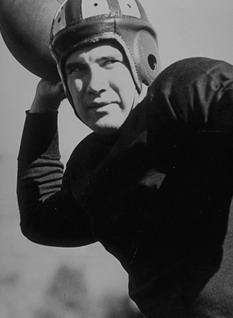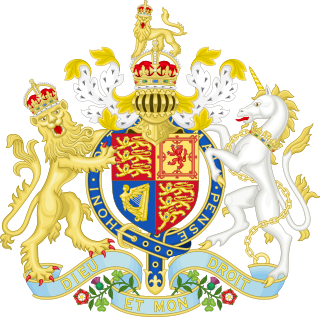Related Research Articles

Conscription is the state-mandated enlistment of people in a national service, mainly a military service. Conscription dates back to antiquity and it continues in some countries to the present day under various names. The modern system of near-universal national conscription for young men dates to the French Revolution in the 1790s, where it became the basis of a very large and powerful military. Most European nations later copied the system in peacetime, so that men at a certain age would serve 1–8 years on active duty and then transfer to the reserve force.

The Selective Service System (SSS) is an independent agency of the United States government that maintains information on U.S. citizens and other U.S. residents potentially subject to military conscription and carries out contingency planning and preparations for two types of draft: a general draft based on registration lists of men aged 18–25, and a special-skills draft based on professional licensing lists of workers in specified health care occupations. In the event of either type of draft, the Selective Service System would send out induction notices, adjudicate claims for deferments or exemptions, and assign draftees classified as conscientious objectors to alternative service work. All male U.S. citizens and immigrant non-citizens who are between the ages of 18 and 25 are required by law to have registered within 30 days of their 18th birthdays, and must notify the Selective Service within ten days of any changes to any of the information they provided on their registration cards, such as a change of address. The Selective Service System is a contingency mechanism for the possibility that conscription becomes necessary.

On December 1, 1969, the Selective Service System of the United States conducted two lotteries to determine the order of call to military service in the Vietnam War in the year 1970, for men born from January 1, 1944, to December 31, 1950. These lotteries occurred during a period of conscription in the United States that lasted from 1947 to 1973. It was the first time a lottery system had been used to select men for military service since 1942. The lottery would establish the priority of call based on the birth dates of registrants.

Conscription in Australia, also known as National Service following the Second World War, has a controversial history which dates back to the implementation of compulsory military training and service in the first years of Australia's nationhood. Military conscription for peacetime service was abolished in 1972.

Military service is service by an individual or group in an army or other militia, air forces, and naval forces, whether as a chosen job (volunteer) or as a result of an involuntary draft (conscription).

In the United States, military conscription, commonly known as the draft, has been employed by the U.S. federal government in six conflicts: the American Revolutionary War, the American Civil War, World War I, World War II, the Korean War, and the Vietnam War. The fourth incarnation of the draft came into being in 1940, through the Selective Training and Service Act; this was the country's first peacetime draft. From 1940 until 1973, during both peacetime and periods of conflict, men were drafted to fill vacancies in the U.S. Armed Forces that could not be filled through voluntary means. Active conscription in the United States ended in 1973, when the U.S. Armed Forces moved to an all-volunteer military. However, conscription remains in place on a contingency basis; all male U.S. citizens, regardless of where they live, and male immigrants, whether documented or undocumented, residing within the United States, who are 18 through 25 are required to register with the Selective Service System. United States federal law also continues to provide for the compulsory conscription of men between the ages of 17 and 44 who are, or who have made a declaration of intention to become, U.S. citizens, and additionally certain women, for militia service pursuant to Article I, Section 8 of the United States Constitution and 10 U.S. Code § 246.
United States v. O'Brien, 391 U.S. 367 (1968), was a landmark decision of the United States Supreme Court, ruling that a criminal prohibition against burning a draft card did not violate the First Amendment's guarantee of free speech. Though the court recognized that O'Brien's conduct was expressive as a protest against the Vietnam War, it considered the law justified by a significant government interest unrelated to the suppression of speech and was tailored towards that end.

The Selective Service Act of 1917 or Selective Draft Act authorized the United States federal government to raise a national army for service in World War I through conscription. It was envisioned in December 1916 and brought to President Woodrow Wilson's attention shortly after the break in relations with Germany in February 1917. The Act itself was drafted by then-Captain Hugh S. Johnson after the United States entered World War I by declaring war on Germany. The Act was canceled with the end of the war on November 11, 1918. The Act was upheld as constitutional by the United States Supreme Court in 1918.

Lewis Blaine Hershey was a United States Army general who served as the second Director of the Selective Service System, the means by which the United States administers its military conscription.

The Selective Training and Service Act of 1940, also known as the Burke–Wadsworth Act, Pub. L.Tooltip Public Law 76–783, 54 Stat. 885, enacted September 16, 1940, was the first peacetime conscription in United States history. This Selective Service Act required that men who had reached their 21st birthday but had not yet reached their 36th birthday register with local draft boards. Later, when the U.S. entered World War II, all men from their 18th birthday until the day before their 45th birthday were made subject to military service, and all men from their 18th birthday until the day before their 65th birthday were required to register.

Conscription in Russia is a 12-month draft, which is mandatory for all male citizens who are between 18 and 30 years old, with a number of exceptions. Avoiding the draft is a felony under Russian criminal code and is punishable by up to 18 months of imprisonment. Conscripts are generally prohibited from being deployed abroad.

Robert Fredric MacLeod was an American football halfback, most notably at Dartmouth College in the late 1930s. After serving in the United States Marine Corps during World War II, he had a career in magazine publishing.
John Blair Linn Goodwin (1912–1994) was an American author and poet, best known for his story "The Cocoon" (1946), collected in Houghton Mifflin's The Best American Short Stories in 1947. A further short story was "Stone Still, Stone Cold" (1949).

The National Registration Act 1939 was an Act of Parliament in the United Kingdom. The initial National Registration Bill was introduced to Parliament as an emergency measure at the start of the Second World War.

René Carmille was a French military officer, civil servant under the Republic and Vichy government, and member of the French Resistance. During World War II, in his office at the government's Demographics Department, he created the National Statistics Service and the individual code number which would become the social security number after liberation and is still used in France today. While there, Carmille sabotaged the Nazi census of France, thus saving tens of thousands of Jewish people from death camps.

Draft-card burning was a symbol of protest performed by thousands of young men in the United States and Australia in the 1960s and early 1970s. The first draft-card burners were American men participating in the opposition to United States involvement in the Vietnam War. The first well-publicized protest was in December 1963, with a 22-year-old conscientious objector, Gene Keyes, setting fire to his card on Christmas Day in Champaign, Illinois. In May 1964, a larger demonstration, with about 50 people in Union Square, New York, was organized by the War Resisters League chaired by David McReynolds.

Harry Joseph "Rocky" Rockafeller Jr. was an American college football player, coach, and athletics administrator at Rutgers University. He was the head football coach for the Rutgers Scarlet Knights football team for eight years from 1927 to 1930 and from 1942 to 1945. He was also the athletic director until 1961.

Conscription, sometimes called "the draft", is the compulsory enlistment of people in a national service, most often a military service. Men have been subjected to military drafts in most cases. Currently only two countries conscript women and men on the same formal conditions: Norway and Sweden.
The Hershey Directive was a memorandum sent in October, 1967, from Lewis Blaine Hershey, Director of the U.S. Selective Service System, to local draft boards recommending that local boards reclassify registrants who had "abandoned or mutilated" their draft cards as 1-A-delinquent, the highest classification. Two days later, he sent a letter to the boards expanding on the memorandum, suggesting that they reclassify Selective Service registrants as delinquent if they were in violation of any of the Selective Service Act or Regulations. The New York Times published the text of both documents on November 9, 1967.

Richard Emory (1919–1994) was an American actor born in Santa Barbara, California. After serving in the military as a marine in World War II, he started a career as an actor. He achieved recognition in movies of the 1950s and 1960s and also found work as a supporting actor in various television serials. He was the first son of one of the early power couples of the Silent Film era - Emory Johnson and Ella Hall. After his birth, a brother and two sisters would follow. Emory retired from show business in 1963 and would spend the rest of his life working odd jobs. He died in February 1994 in Moab, Utah.
References
- ↑ "World War II Selective Service Draft Cards: Fourth Registration, 1942" (PDF). archives.gov. Retrieved June 7, 2023.
- ↑ The Crisis Years: 1940 and 1941 by Heber A Holbrook
- ↑ ""The Old Man's Draft" | Newberry" . Retrieved June 7, 2023.
- ↑ "WWII "Old Man's Draft" Registration Cards".
- ↑ "Old Man's Registration". vlp.cah.ucf.edu. April 27, 1942. Retrieved June 7, 2023.